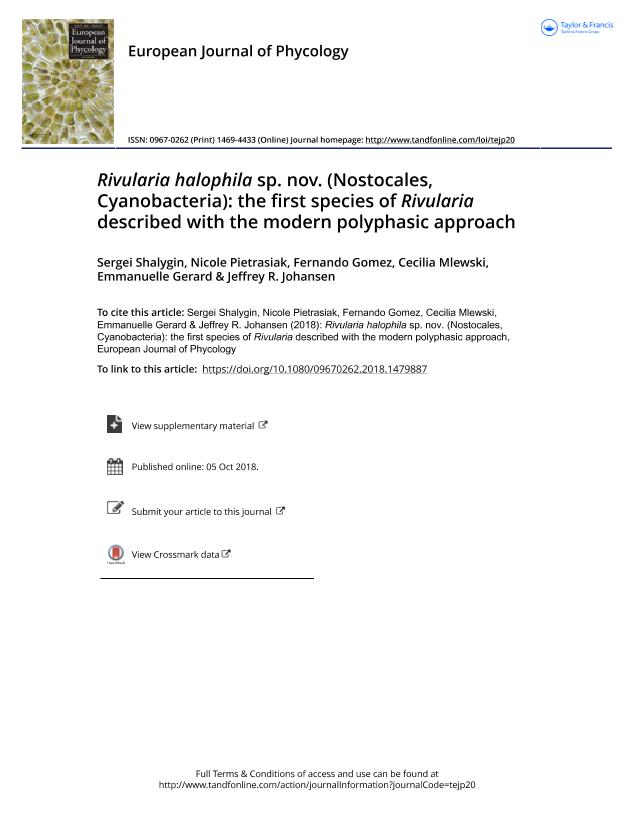Artículo
Rivularia halophila sp. nov. (Nostocales, Cyanobacteria): the first species of Rivularia described with the modern polyphasic approach
Shalygin, Sergei; Pietrasiak, Nicole; Gomez, Fernando; Mlewski, Estela Cecilia ; Gerard, Emmanuelle; Johansen, Jeffrey R.
; Gerard, Emmanuelle; Johansen, Jeffrey R.
 ; Gerard, Emmanuelle; Johansen, Jeffrey R.
; Gerard, Emmanuelle; Johansen, Jeffrey R.
Fecha de publicación:
10/2018
Editorial:
Taylor & Francis Ltd
Revista:
European Journal Of Phycology
ISSN:
0967-0262
e-ISSN:
1469-4433
Idioma:
Inglés
Tipo de recurso:
Artículo publicado
Clasificación temática:
Resumen
Natural populations of a Rivularia-like cyanobacterium were collected from the carbonate deposits of the temporarily flooded littoral zone of a hypersaline, high elevation lake, The Laguna Negra, Andes, Argentina. Subsequently, the cyanobacterial strain PUNA-NP3, named after its origin (Puna Volcanic Plateau) was isolated from these Rivularia-like rounded, pillow-like, black microbial mats. None of the previously described species of the genus Rivularia occupy inland, hypersaline aquatic environments. After morphological examination of this strain, we found clear morphological autapomorphies, such as mucilaginous pads at the bases of the young trichomes, wide trichomes and filaments, and uniquely branched trichomes. Furthermore, based on results from 16S rRNA phylogeny and analysis of the 16S-23S ITS region, PUNA-NP3 was found to be an independent lineage of the evolutionary tree. Based on the combination of ecological, morphological and molecular evidence, we name strain PUNA-NP3 Rivularia halophila sp. nov. a new species under requirements of the International Code of Nomenclature for Algae, Fungi and Plants.
Archivos asociados
Licencia
Identificadores
Colecciones
Articulos(CICTERRA)
Articulos de CENTRO DE INVEST.EN CS.DE LA TIERRA
Articulos de CENTRO DE INVEST.EN CS.DE LA TIERRA
Citación
Shalygin, Sergei; Pietrasiak, Nicole; Gomez, Fernando; Mlewski, Estela Cecilia; Gerard, Emmanuelle; et al.; Rivularia halophila sp. nov. (Nostocales, Cyanobacteria): the first species of Rivularia described with the modern polyphasic approach; Taylor & Francis Ltd; European Journal Of Phycology; 53; 4; 10-2018; 537-548
Compartir
Altmétricas



